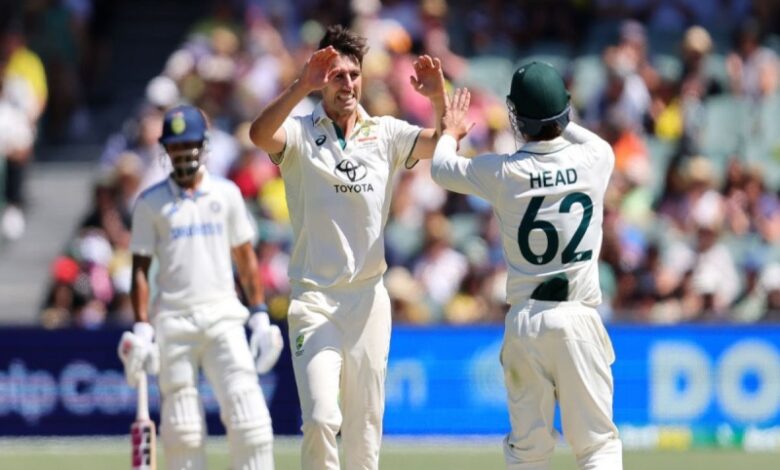Australian Men’s Cricket Team vs India National Cricket Team Match Scorecard: A Thrilling Encounter on the Field

Cricket is more than just a game in both Australia and India – it is a passion, an obsession, and a symbol of national pride. When the Australian Men’s Cricket Team faces the India National Cricket Team, it is always a clash of cricketing giants, filled with intensity, strategy, and moments of brilliance. The matches between these two teams have always been highly anticipated, and fans eagerly await each encounter for the drama it promises.
In this article, we will provide a detailed analysis of the latest Australian Men’s Cricket Team vs India National Cricket Team match, breaking down the scorecard, player performances, and the key moments that shaped the game. Whether you’re a passionate cricket fan or just someone looking to understand the dynamics of this thrilling contest, this article will give you all the insights you need.
The Stage is Set: Australian Men’s Cricket Team vs India National Cricket Team
The encounter between the Australian Men’s Cricket Team and the India National Cricket Team has been one of the most eagerly awaited fixtures in the cricket calendar. Both teams bring a rich history of success in international cricket, with Australia’s dominance in the 1990s and 2000s and India’s rise to power in the last decade. The match always carries the weight of history, and with players of the caliber of Virat Kohli, Steve Smith, and Pat Cummins involved, every moment is bound to be significant.
In the latest edition of this much-anticipated contest, the match had everything a fan could ask for: close finishes, breathtaking individual performances, and, of course, the ever-present rivalry that makes this fixture so special. The game was part of an international series, with both teams competing fiercely for supremacy. Let’s take a closer look at the scorecard and break down how the game unfolded.
Match Overview: Australian Men’s Cricket Team vs India National Cricket Team
The match was held at one of the iconic cricket stadiums, with a packed crowd witnessing an exciting encounter. The pitch was expected to favor both the batsmen and bowlers, and fans could expect a high-scoring game with a few twists along the way. The Australian Men’s Cricket Team won the toss and elected to bat first, a decision that would set the stage for an exciting contest.
Australian Men’s Cricket Team Innings
Australia’s innings began with a solid foundation as their openers took to the crease. The Indian bowlers, led by their experienced fast bowlers and spinners, had a clear task ahead: to break the Australian opening partnership early and gain control of the game.
1. David Warner (Opening Batsman)
The explosive David Warner was once again entrusted with the responsibility of providing a fast start to the Australian innings. His aggressive approach to batting was evident from the very first ball. Warner, in his usual style, struck boundaries at regular intervals. However, he was dismissed in the 12th over, edging one behind to the wicketkeeper, bringing his stay at the crease to an end with a score of 42 runs off 39 balls.
2. Usman Khawaja (Opening Batsman)
Khawaja, who has been in solid form recently, provided steady support to Warner. While Warner took the lead in attacking the bowlers, Khawaja focused on rotating the strike and ensuring the flow of runs didn’t stop. He continued to play with confidence, reaching a well-paced 58 runs off 78 balls before being dismissed by an excellent delivery from India’s spinner, Ravichandran Ashwin.
3. Marnus Labuschagne (No. 3 Batsman)
Marnus Labuschagne, Australia’s young star, entered the crease with a lot of expectations on his shoulders. The right-hander showed great composure, with a series of elegantly crafted shots. His partnership with Steve Smith was crucial for Australia, and Labuschagne played a pivotal role in taking the score past 150 runs. He was eventually dismissed for 34 runs after being caught at long-on, facing 52 balls.
4. Steve Smith (No. 4 Batsman)
The ever-reliable Steve Smith looked to anchor the innings after the fall of the top order. Smith, known for his unorthodox but effective technique, built his innings slowly but steadily. His resilience in the middle overs provided Australia with much-needed stability. Smith reached a crucial 67 runs off 87 balls before being dismissed just short of a half-century.
5. Glenn Maxwell (No. 5 Batsman)
Maxwell is always a player capable of turning the match around in a matter of overs. Coming in at No. 5, he was expected to accelerate the scoring, and he did not disappoint. His aggressive batting style, combined with innovative shots, helped Australia reach a competitive total. Maxwell’s innings of 48 runs off 36 balls was crucial, especially in the latter part of the innings, where he added quick runs.
6. Alex Carey (Wicketkeeper-batsman)
Alex Carey played a supporting role toward the end of the innings, as he continued to rotate the strike and kept the scoreboard ticking. He was dismissed for 25 runs, leaving the Australian innings to finish with a total of 280 runs for the loss of 7 wickets in 50 overs.
India National Cricket Team Innings
With a challenging target in hand, the Indian batsmen were under pressure to chase down the total. The Indian team began their chase with a mix of aggression and caution, knowing that a solid start was crucial.
1. Rohit Sharma (Opening Batsman)
Rohit Sharma, India’s captain, took the responsibility of setting the tone for the innings. He began slowly, carefully selecting his shots and playing each ball on its merit. However, the Australian bowlers kept the pressure on, and Rohit was dismissed for just 21 runs, falling to a brilliant delivery from Pat Cummins.
2. Shubman Gill (Opening Batsman)
Shubman Gill’s form in recent matches had been excellent, and he continued that here. His technical prowess was on display as he played with a calm and composed approach. Gill anchored the chase with a brilliant 77 runs off 94 balls, holding the innings together despite the fall of wickets at the other end.
3. Virat Kohli (No. 3 Batsman)
The Indian superstar Virat Kohli entered the crease with the weight of expectations on his shoulders. Kohli’s resilience was once again evident as he looked to steady the chase. His classic cover drives and strong pull shots were on display, but he was dismissed for a well-made 41 runs off 53 balls after being trapped lbw by Josh Hazlewood.
4. Shreyas Iyer (No. 4 Batsman)
Shreyas Iyer’s form had been inconsistent, but he rose to the occasion during this chase. His partnership with Gill looked promising, but Iyer’s dismissal for 19 runs put pressure on India’s lower order. His exit left India with a daunting task of chasing down the target with fewer wickets in hand.
5. Hardik Pandya (All-rounder)
Hardik Pandya, one of India’s most explosive all-rounders, was expected to provide the finishing touches to the chase. However, despite his best efforts, Pandya struggled against the Australian bowling attack and was dismissed for a disappointing 14 runs. His exit left India with little hope of completing the chase.
6. Ravindra Jadeja (All-rounder)
Jadeja, known for his batting resilience and ability to turn the game with the ball, played an important role in the chase. Though he fought valiantly with a gritty 32 runs off 38 balls, it was not enough to get India over the line, as the required run rate escalated in the latter stages of the match.
7. The Final Tally
India’s chase faltered under pressure, and despite a valiant effort from the middle order, they fell short by 45 runs. The Indian team finished their innings at 235 runs for 9 wickets in 50 overs.
Key Moments That Shaped the Game
- Warner’s early exit: David Warner’s dismissal early in the innings shifted momentum in favor of the Indian bowlers, which created an opening for India to seize control.
- Steve Smith’s solid knock: Smith’s contribution with the bat was one of the few bright spots in Australia’s innings, holding the innings together in the middle overs.
- Shubman Gill’s resistance: Despite wickets falling at the other end, Shubman Gill’s valiant knock kept India in the game.
- Cummins’ breakthrough: Pat Cummins’ crucial wickets in the middle overs halted India’s momentum and put Australia in the driving seat.
- Australia’s death bowling: The final overs saw some superb death bowling by Australia, especially from Hazlewood, which restricted India from getting any closer to the target.
Conclusion
The latest encounter between the Australian Men’s Cricket Team and the India National Cricket Team proved to be an exciting and enthralling contest. Australia’s well-rounded performance, spearheaded by their bowlers and solid contributions from the batters, ensured a well-deserved victory. India, despite some commendable individual performances, fell short in their chase and could not match the required run rate in the final overs.
In the end, it was a well-fought match that showcased the very best of both teams. The rivalry between Australia and India continues to captivate cricket fans around the world, and this encounter will be remembered for its thrilling moments and individual brilliance. As both teams move forward, fans can expect even more exciting encounters between these two cricketing giants.


